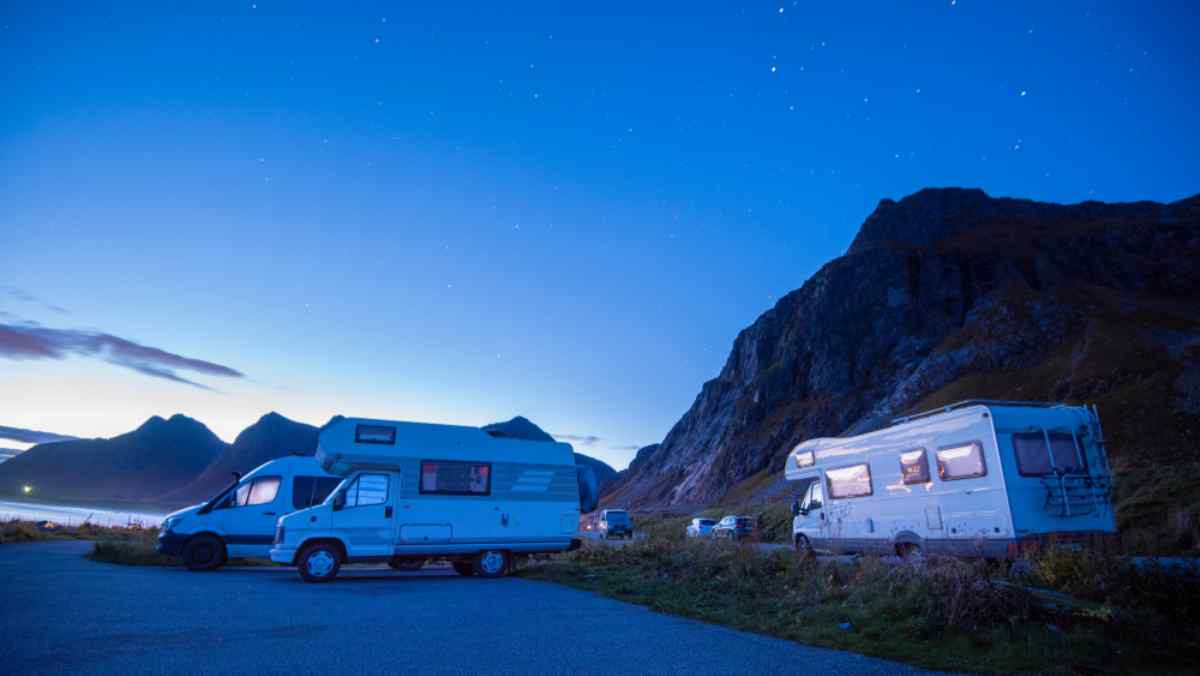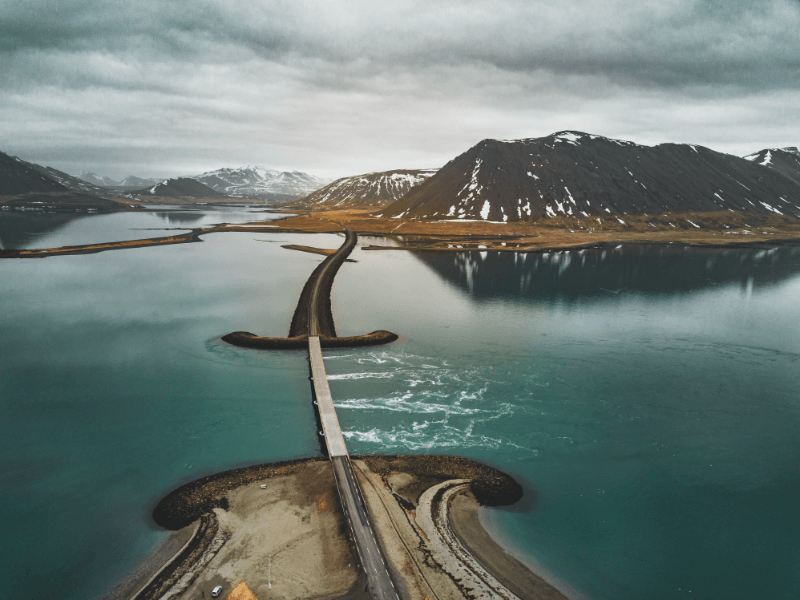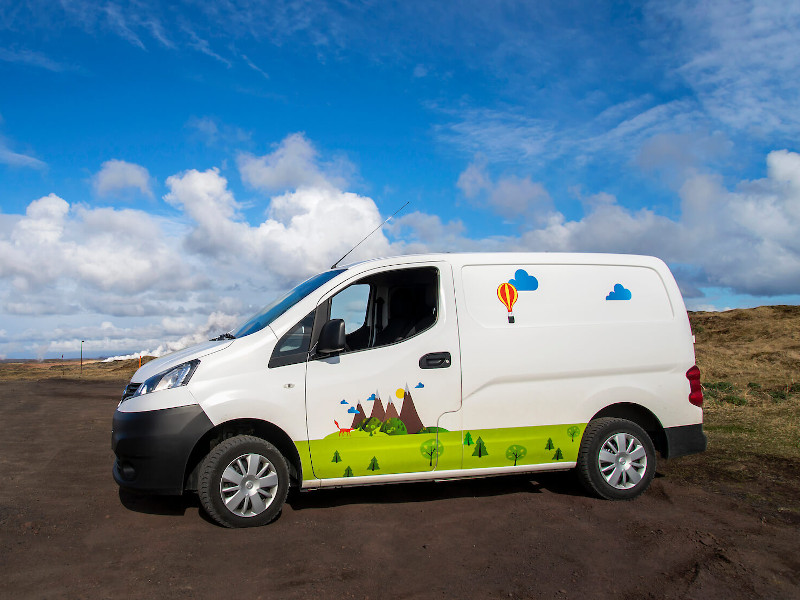The best way to explore breathtaking scenery is by immersing yourself in it and cruising the country roads with all its spectacular sights and exciting excursions. The most comfortable, convenient, and affordable way to do this is by renting a campervan. But for many, this in itself is an entirely new experience, so if you’re a camper newbie, you may also be wondering how to travel in Norway with a campervan.
Well, no need to fret - that’s the very reason we created this nifty guide explaining all the ins and outs of campervanning in Norway. Here, you’ll get all the info, tips, and tricks on how to take on the journey of a lifetime.
Renting a Campervan in Norway
Renting a campervan is super simple. Just take note of the following:
The Size of the Camper
Needless to say, the size of the camper needs to match the size of your party. Trying to squeeze a family of four into a compact camper is a mission in futility.

Your Trip Itinerary
You’ll need to have your campervan match your trip itinerary. You won’t be able to drive a rough gravel road with a 2-wheel drive, and if you’re planning on taking on our F-roads, you’re legally not allowed to drive them without a 4x4 vehicle.
Your Personal Preferences
Of course, your personal preferences will also play a part in which camper you choose. Some don’t mind communal ablutions, while others detest it. And some may enjoy more space and creature comforts, while others don’t mind sticking to the basics.
The Reputation of the Rental Agent
Ensure you deal with a reputable rental agent you can trust, like Campervan Norway. Check out reviews and ratings before you start booking vehicles. A reputable rental agent will not just rent you a campervan but will also assist with various extras, advise on the best rental insurance policies for your specific itinerary, and provide valuable local guidance to enhance your trip.

Your Budget
Needless to say, your available budget will also dictate the type of campervan you rent. If you’ve only got money for a smaller campervan, you simply won’t be able to go for the giant motorhome that makes you look like a rock star on tour. And remember that it’s not just the rental costs you have to take into consideration here; it’s also things like gas consumption.
Important Documentation
You don’t need an International Driver’s license to rent a campervan in Norway. But you’ll still need a valid driver’s license in a language understood in Norway, and which won’t expire for at least 3 months from the date of your trip. So, ensure you have all this in order before pitching up to collect your rental.
Best Places to See with a Campervan in Norway
We already mentioned Norway’s breathtaking scenery and how cruising around the country is the best way to experience it all. But where to start? The following are some of the best places to see with a campervan in Norway:
The Atlantic Road
The Atlantic Road in Norway is truly a once-in-a-lifetime experience. This road stretches out for 8.3 kilometers and connects various islands with bridges crossing the Atlantic Ocean. Not only does this road offer spectacular views, but it’s also an incredibly unique journey that gives new meaning to the term “island hopping.”

Geirangerfjord
In a land filled with fjords, it should come as no surprise that at least one makes it onto this list. But Geirangerfjord is truly special (hence why it’s an official UNESCO World Heritage Site).
With its steep cliffs, deep blue waters, and breathtaking waterfalls, it looks like the location of an epic movie like Lord of the Rings. Just ensure you stay on the road as you cruise along this mouth-dropping expanse of water, and don’t forget to stop at the Flydalsjuvet viewpoint for a panoramic view that will take your breath away!
Trollstigen Road
The Trollstigen Road is also known as one of Norway’s most scenic routes. But unlike the other routes already mentioned, this beauty winds its way through the mountains. It has incredible views of the mountains and the valley below, but this is not a road to be trifled with.
With 11 hairpin bends, it’s not a road to lose focus on (so, eyes on the roads, no matter how breathtaking the scenery!) But even the focused driver will get his/her turn to marvel at the views from the top at Trollstigen Viewpoint.
Lofoten Islands
The Lofoten Islands can sometimes come across as out of place, as if someone teleported houses and tiny towns from somewhere else and placed them on these small, rocky islands with towering mountains surrounded by water.
But the Lofoten Islands, with its oddly picturesque fishing villages (Henningsvær and Reine), beautiful beaches, and dramatic peaks, is an archipelago experience not to be missed! Cruising along the E10 in your campervan will give you the chance to explore this region.

Preikestolen (aka Pulpit Rock)
Preikestolen is a pretty iconic landmark but for different reasons. Firstly, it offers views across Lysefjord and the rest of the Norwegian landscape that really makes you feel like you’re on top of the world (literally!). Secondly, the rock (or rather cliff) looks like a slab or block of rock where the rest of it has been chipped away.
But it’s not just Preikestolen that’s the adventure here; it’s also the route you take. You can travel there by taking the ferry or sticking to the scenic road, which includes a tunnel. Either way, you won’t be able to get onto the rock with your camper, so wear comfortable shoes to do a little light hiking.
Jostedalsbreen National Park
Jostedalsbreen National Park looks like glaciers invading Norway, steadily creeping their way into the breathtaking wilderness. Here, you can have plenty of outdoor fun, such as hiking to get up close to a glacier or booking a spot on a guided glacier walk. The drive through Jostedalsbreen will give you the best of all worlds, driving along mountains, lakes, meadows, and glaciers.

Hardangervidda National Park
Hardangervidda is yet another beautiful national park, which will have a sense of tranquillity wash over you as you drive through this massive mountain plateau (the largest in northern Europe!). The route is characterized by spectacular water scenes, including lakes and streams winding their way through the landscape, as well as many cascading waterfalls. Also, keep an eye out for local wildlife!
Gamle Aurlandsvegen (aka Snow Road)
Gamle Aurlandsvegen is an 18-kilometer mountain road offering incredible views of the valleys and fjords below. It also has plenty of interesting stops along the way, so be sure to give yourself ample time in your trip itinerary to explore this road. Also, remember to stop at Stegastein Viewpoint for a snapshot of the amazing panoramic views.
Driving in Norway
If this is going to be your first time driving in Norway, you’ll need to keep the following in mind:

- The right is right when it comes to which side of the road you have to drive on here in Norway.
- It’s recommended to always keep your headlights on – even during the day.
- Everyone in a vehicle is legally required to wear seatbelts, and you can be heavily fined if you’re ever caught not adhering to this road rule.
- Drinking and driving is not tolerated in Norway, and even though you may not think you’re intoxicated, our low legal blood alcohol limit may disagree. So, avoid drinking anything at all when you’re the designated driver.
- Norway has various types of roads, and you’ll need to be prepared for all of them. Our main roads are paved and well-maintained, but we also have rural gravel roads and steep and winding mountain roads. If you’re uncertain about the road conditions on your route, your rental agent can provide info and advice.
- Stick to the speed limit and remember that it may not be what you’re used to back home. While the signs will guide you, a good general rule of thumb is to keep to 80 km/h on our paved, open roads and 50 km/h in our urban areas.
- There are toll roads here in Norway. While most rental campers will have toll tags on (making payment super easy), others may require you to pay the tolls manually. Use platforms and apps like Epass24 and AutoPASS to make payments (unless automatically charged to the rental agent).
- Driving in Norway during the winter with snow and ice can be an adventure on its own. You’ll need to ensure you stick to legal and safety requirements, such as snow tires, during this time. The official winter season is from December to March, even though conditions can arrive as early as November and stay as late as April.
Camping in Norway
In Norway, we have something called “allemannsretten” (the right to roam), which essentially means that wild camping is allowed (even in a campervan!), but with a few ground rules:

- Try to avoid private property and farmland, and stay at least 150 meters from inhabited houses.
- Don’t try to makeshift roads trying to reach what you consider the “perfect” camping spot. The damage you can cause to our environment and ecosystem is immeasurable.
- Never stay on the same wild camping spot for longer than 48 hours.
- If you should ever find yourself wanting to camp on private property, please ask permission from the owner first. Also, ensure you don’t overstay your welcome and stick to the 48-hour guideline.
- Follow the leave-no-trace principle, and ensure that you leave the area exactly as you found it. So, no littering, trampling of the area and its plant life, etc.
- While wild camping is allowed in Norway, also keep a lookout for some gas stations that allow you to park your campervan there overnight (emphasis on overnight, not all week), and we’d still recommend booking yourself a long stay at one of our beautiful campsites with all sorts of additional facilities and amenities.
What to Pack for Norway
Don’t worry; in this section, we won’t be telling adults what to wear and what not to wear, but we will give you a few tips on essentials for Norway specifically and things you might not have thought of:

- Clothes – We know you’ve already thought about this one, but please ensure that you bring clothes you can layer. That way, you’ll be prepared for anything and can take things off and put things on as the day goes.
- Camping Gear – Have a chat with your rental agent about the camping gear included in your rental, as not all rentals (or rental agents, for that matter) are made equal. Besides, even in the most kitted-out campervan, you may still feel like cooking outside, and those types of accessories are not always included. The same goes for things like camping chairs and sleeping bags (the latter is often needed if you’re ever planning on sleeping over in a backpackers, etc.)
- Navigation Tools – In modern-day, GPS apps and online maps are the order of the day. But we strongly advise you to also download a few offline maps and bring along a few hard copies. Signals and technology fail you, and then you don’t want to be lost (literally).
- Extra Rations – You don’t need a haul that might get you on an episode of Hoarders; just keep a few extra bottles of water and long-lasting food items like energy bars, nuts, and oats if you plan on venturing into our more remote regions. It’s just in case anything should happen (even if it’s just a breakdown on the side of the road), it may take a while for help to arrive, and you don’t want to add hunger and thirst to your problems.
- First Aid Kit – This is often something that gets left behind on holiday travels and is the one thing that can make the most difference in any medical situation (especially in remote areas).
- Camera – That’s if you’re not planning on using your mobile phone.
- Chargers, Power Banks, etc. – Many don’t know this, but the cold weather in the north actually makes your batteries deplete quicker.
The Best Time to Visit Norway with a Campervan
The best time to visit Norway will depend on many factors, including your personal preferences, what you’d like to see and do in Norway, as well as your budget. Below, you will find a little cheat sheet to the different seasons here in Norway and where you can quickly spot what will and won’t work for you:
| Season | What You Can Expect |
| Summer (June to August) |
|
| Winter (November to March) |
|
| Shoulder Months: Spring (April to May) & Fall (September to October) |
|
Traveling Norway with a Campervan: Unparalleled Freedom
Traveling Norway in a campervan is the ultimate holiday adventure. Not only do you get the chance to truly immerse yourself in our breathtaking landscapes, cruising along majestic mountains, beautiful fjords, etc., but you also remain the captain of your own “ship” with no one telling you where to go or when to be there the way a guided tour or booked accommodation does. So, use our guide to plan your trip, pack those essentials, rent a campervan in Norway, and hit the open road, embracing the ultimate freedom and adventure!



 By
By 






